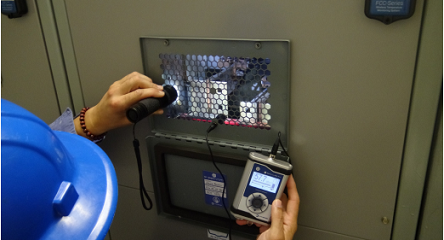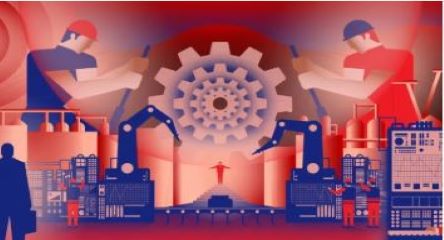Improving asset management in any organization not only requires effective leadership and a strategy, but also engagement from end users and other people involved with the program(s). In general, technology offers solutions to stay competitive and discover new business opportunities. However, if not done right, its implementation can also cause frustration. By focusing on a “People-Centric” technology approach, you will have greater acceptance and adoption of the new solutions and associated processes.
Asset Management Technology Implementations
Asset management is typically either embraced whole-heartedly or considered to be extra work. If it is the latter, learning new technology may not be welcome. This perception is somewhat ironic because the goal of these projects is to reduce the friction of adopting more efficient processes.
For example, if you are implementing a new asset management mobile technology for technicians, supervisors and field service employees – what are some of the risks?
- Creating inefficiency – a poorly designed and implemented solution could create inefficiency rather than reduce it. An unnecessarily complicated solution can cause a huge amount of friction in technology adoption, especially if a mobile solution does not focus on the most repeatable and simplified tasks for a role.
- Poor user experience (UX)– are there too many fields, options and forms on the app for repetitive tasks? Is it difficult to locate the right screen? People need a simple UX so they can complete tasks instead of constantly tapping on a device screen or searching for the one they need. To be people-centric, the technology should support the business process instead of being a roadblock.
- Improper training – often a complex or poorly designed solution makes it difficult to perform training and onboarding. In comparison, a well-designed solution does not require lengthy training. It can also lead to being a more cost-effective solution to maintain.
- Not testing with actual users – you may not want to hear about potential problems in the rush and pressure to reach the Go Live stage; however, actual users can detect any issues, actual or perceived, during the testing phase. The earlier you know, the better it is for adoption at the end.
- Not understanding the work – do the processes and tasks require a large screen, or is a small screen ok? Is a stylus needed for precision? How can they recharge the device easily given where they work? Is a rugged case required? Make sure your planning and budget consider how the work gets completed in the office, on the shop floor or out in the field.
Any investment naturally brings the expectation of direct, measurable improvements. In asset management, new technology comes with the hope of new insights, better coordination and improved processes. In most cases, we are also trying to get people away from their paper, spreadsheets and siloed solutions that provide very limited value for everyone else.
So how can we improve our likelihood of better adoption? An emphasis on People-Centric Asset Management technology acknowledges the requirements of all stakeholders involved with the core processes. This focus on people over solutions-alone creates the collaborative environment necessary for acceptance and adoption.
Examples of People-Centric Technology in Asset Management
Include key personnel from every level of the organization – the knowledge needed to unlock asset management value is highly dispersed throughout your organization. Consulting with affected stakeholders not only helps with gathering this knowledge but also feeds into any change management requirements. By considering the perspective of management as well as users, you eliminate the “pretending to know” situation that could derail the initiative. Instead, the key influencers’ feedback assists with spreading positive discussions about the project because they feel valued.
- Design for the rule, not the exception – if 95% of workflows for a process follow a certain pattern, then implement technology to complement it. Additional processes, or variants, can be addressed as exceptions. There is always a trade-off, of course. However, it is not always necessary to create confusion and complexity by mixing routines and deviations.
- Ease of navigation – if a technician can’t easily find the required functions, they will be less likely to use the technology on a regular basis. As a result, capturing the “value-added” observations, such as damage and cause codes important for asset management improvements, will be difficult to achieve.
- Avoid data overload – Does the field technician need an update of 10,000 items of equipment on their device? Simplify access to these lists by providing them with the equipment based on their particular role. This permission-based inventory makes it both easier to find and easier to synchronize with the central system. Another benefit is reducing the risk of synchronization issues that occur due to complex data and master data changes.
- Realistic Asset Master Data commitment – deep and detailed asset hierarchies are impressive in theory, yet can these essential updates occur frequently enough to keep it current in near real time? Is the correct asset easy to find? Probably not. Technician confidence in the solution may be lost if asset master data is not accurate, current and reliably available.
For all the projects I have worked on with asset management technologies, I prefer to identify the business processes that the organization is relying on the most. Almost without fail during a consultation process, the affected stakeholders identify the potential issues during the implementation of new processes. The earlier you know these trouble spots, the cheaper and easier they are to address.
Summary
Innovative asset management journeys are supported by your people as well as the technology you are deploying. Adopting a “People-Centric” approach engages and empowers your workforce. This sense of ownership not only benefits a particular technology implementation but also builds a culture focused on making work easier and safer. At the end of the day, we are relying upon people to engage with the technology in a way that delivers tangible value through asset management processes and practices. A great consultancy team, such as Movilitas, can help you unlock the likelihood of delivering real value with your project and support lean success.





